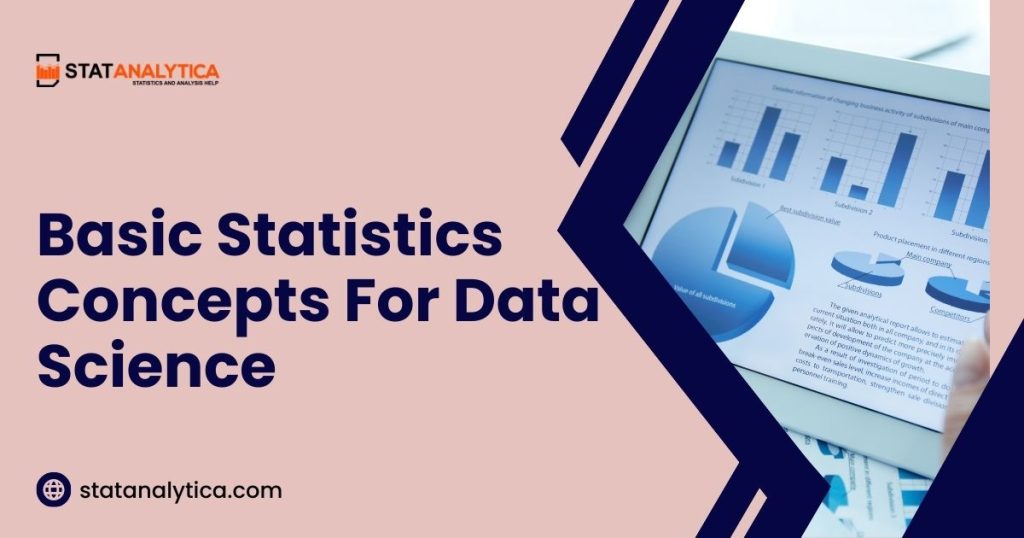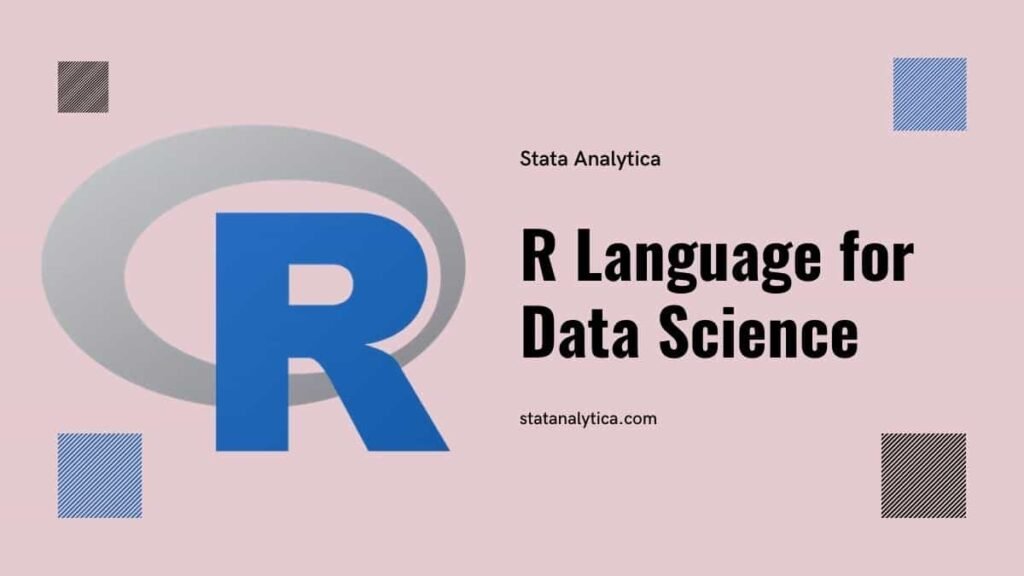In today’s technologically advanced world, where data is considered king, statistics is the foundation of data science. Whether you are creating forecasting models, exploring patterns or conducting experiments, statistics gives you the means to go from the observed data to the decisions. From data distributions to testing hypotheses, statistics becomes a prerequisite to any data scientist.
This blog is to help you understand the Basic Statistics Concepts For Data Science. So topics to be included are descriptive and inferential statistics, probability, distributions, sampling techniques, and real-life uses for statistics. Finally, you will have the core set of skills necessary for proper data analysis and apply them throughout the process or decision-making sequence.
Why Statistics Matter in Data Science
Table of Contents
Statistical literacy is not the application of statistical methods; it is the way of approaching data and the world of variability. Here’s why it’s crucial in data science.
Data Exploration and Summarization:
Statistics is used before venturing into machine learning, as data scientists utilize it to describe and analyze data. Elements such as mean, median, variance and graphs enable us to view trends, patterns and outliers.
Example: Let’s say that you are working on a customer purchase data. By identifying the average functional order value and plotting sales as a curve, cycles or bursts could be observed.
Building Predictive Models:
It is practically known that today’s machine learning algorithms are based on probabilities. For instance, linear regression estimates a dependent variable statistically using independent variables.
Example: House prices are estimated using regression methods, using size, location, and number of bedrooms as variables.
Decision-Making in Business:
A/B testing and various other statistical instruments are used to refute or affirm theories of enterprises and make knowledgeable decisions.
Example: An e-commerce platform might use A/B testing in which one creates two versions of a product page and compares how many people convert from one to the other.
Handling Uncertainty:
In practical applications, data usually needs to be more precise and quiet. Statistics is used to manage the uncertainty of certain events and make the desired predictions with adequate certainty.
Basic Statistics Concepts For Data Science
A. Descriptive Statistics
Descriptive statistics refers to a range of techniques used to arrange and compile data in a way that is easier to comprehend. This is always considered the initial stage of data analysis.
Measures of Central Tendency:
These metrics help identify the “center” of the data distribution:
Mean: The arithmetic average is appropriate for an average value when the data is normal or symmetric distributions with no large outliers.
Median: The middle of a dataset where all records corresponding to the same value organized from least to greatest are sorted.
Mode: The mean, which is mostly used, especially when dealing with a set of categorical data.
Example Application:
When analysing the numbers of monthly website traffic you may get more informative data from the median than from the mean if there is one month that attracted a record number of visitors.
Measures of Dispersion:
These metrics reveal the spread of the data:
Range: The smallest range of values was measured for ability and the largest for motivation.
Variance: Also refers to the geometric mean or the root-mean-square of the deviations from
average.
Standard Deviation (SD): The value for Y of the square root of variance of the data set that was used to derive the estimates.
Example:
If two data sets have the same mean but SD is different then the data set with the high SD has the more variability.
Visualizations:
Descriptive statistics are often paired with visual tools like:
Histograms: To look at what the data looks like.
Box Plots: Use the stem and leaf plot to determine the more precise range of data spread.
Scatter Plots: In order to highlight relationships between two variables.
B. Probability Basics
Probability is used throughout much of statistical analysis, as it represents the numerical chance of any event happening.
Key Concepts:
Random Variables: Random variables are numerator variables with values inquiring from random occurrences in a given research.
Probability Distributions: It works regarding probability functions of the consequences. These include uniform distribution, normal distribution and the Poisson distribution.
Bayesian Thinking:
Bayesian statistics is the process of using prior information to change the probabilities as new information is added.
Example Application:
An example of a system is a fraud detection system where the probability of a transaction being fraudulent might be updated from new information such as location or transaction history.
C. Inferential Statistics
Analyzing these two concepts, it can be deduced that inferential statistics makes it possible to draw conclusions about the entire population from a sample of it.
Population vs. Sample:
Population: The entire group of interest.
Sample: A more controlled and easily managed part of population.
Sampling is important when dealing with big modes of data or when it would be impossible to gather data from every population.
Hypothesis Testing:
This involves hypothesis making, which entails predicting some characteristics of a dataset.
- Null Hypothesis (H₀): The two will have no connection, and it will aid none of them.
- Alternative Hypothesis (H₁): There is an existence of effect and relationship.
- P-value: Estimation of the extent of support for H₁ in comparison to H₀. Usually, a value of p < 0.05 represents a significant level.
Example Application:
Measuring the difference in sales between current and introducing a new marketing strategy to the targeted market.
Confidence Intervals:
These afford a range of values that will likely contain a population parameter.
Example:
A confidence interval may be certainly applied as “95% confidence that the average monthly revenue is between $10,000 and $12,000.”
D. Correlation and Regression
These techniques work more in relation to different variables.
Correlation:
- Positive Correlation: Both variables rise in tandem;
- Negative Correlation: As much as one varies, the other also varies, though in the opposite direction.
- Zero Correlation: There is no direct proportionality between the amount of negative emotion and the number of posts.
Caveat: Because two variables can be related, the causal attribute cannot be claimed to have caused the other one.
Regression:
Regression models estimate the value of the dependent variable by employing values of the independent variable.
- Linear Regression: Believes that x and y are linearly related so that when change in x is given, change in y is obtained in the same proportion.
- Multiple Regression: Provides for inclusion of many independent variables.
Example Application:
Forecasting overall revenue for the company on the premise of advertising expenditure, number of visitors to the firm’s website and customer satisfaction ratings.
E. Probability Distributions
Probability distributions refer to the tendencies that are exhibited by data values.
Normal Distribution:
An asymmetrical curve is often encountered when measuring real-world variables, such as children’s heights and scores.
Binomial Distribution:
Examples of tasks that involve modeling dichotomous results such as win/lose (like tossing a coin).
Poisson Distribution:
Implements the rate of occurrence of events in a given ‘period’ (e.g., the frequency of website click-throughs per minute).
F. Sampling and Sampling Techniques
Random Sampling:
This means that there will be an equal opportunity to choose from the available batch of people.
Stratified Sampling:
Select segments of the population in part by dividing them into categories known as ‘strata’, then take a sample of each of these.
Cluster Sampling:
It takes a top-down’ approach by structuring the population into groups of cases and randomly sampling entire groups.
Systematic Sampling:
Picks out every nth person from a list or sequence.
This allows sampling to increase efficiency while ensuring that the data collected is representative of the whole population.
G. Statistical Significance
Statistical significance measures whether impacts are genuine or only by luck.
P-value Thresholds:
P-value < 0.05: Statistically significant.
P-value < 0.01: Highly significant.
Effect Size:
In addition to significance, effect size outcomes establish practical significance.
Practical Applications of Statistics in Data Science
A/B Testing:
Detect similarities and differences between different versions of webpages, emails or products needed to achieve the best results.
Predictive Modeling:
Develop models for the purpose of making predictions, including churn rates, sales and credit risk.
Anomaly Detection:
Look for anomalies in financial, secure-IT, or manufacturing quality control transaction paths.
Data Cleaning:
Take appropriate action to manage missing data, detect outliers and normalize the data using statistical tools.
Tools and Libraries for Statistical Analysis
Python:
- NumPy: It is fast in making numerical computations.
- Pandas: Data manipulation.
- SciPy: Advanced statistics.
- Stats models: Hypothesis testing and modeling Hypothesis testing and modeling Hypothesis Testing and Modeling Hypothesis testing and modeling.
R:
Commonly used tool for calculation and analytics.
Excel:
Easy to use, especially for tasks that involve simple statistical analysis.
Challenges and Tips for Learning Statistics
Common Challenges:
Such ideas as distributions, p-values etc, are often hard to grasp for some learners.
If a reader fails to understand certain results properly, he or she may draw incorrect conclusions from an analysis.
Tips for Mastery:
Start with Basics: Lay a sound framework of Descriptive statistics.
Practice: Use actual data sets.
Leverage Resources: Self learning through the internet, reading educational books and blogs.
Conclusion
Statistics are very important in the process of exercising data science, and hence, this is a good exercise. This work states that statistical thinking is indeed a core skill in data science since it is involved across the entire process of the data science cycle. Once you grasp this concept and realize how it can be operationalized, you are ready to pull the right lever and extract information that makes a difference.
Statistics is a general skill that needs constant practice and improves gradually. Embrace the journey and remember where the data doesn’t lie—if you know how to listen to it!


